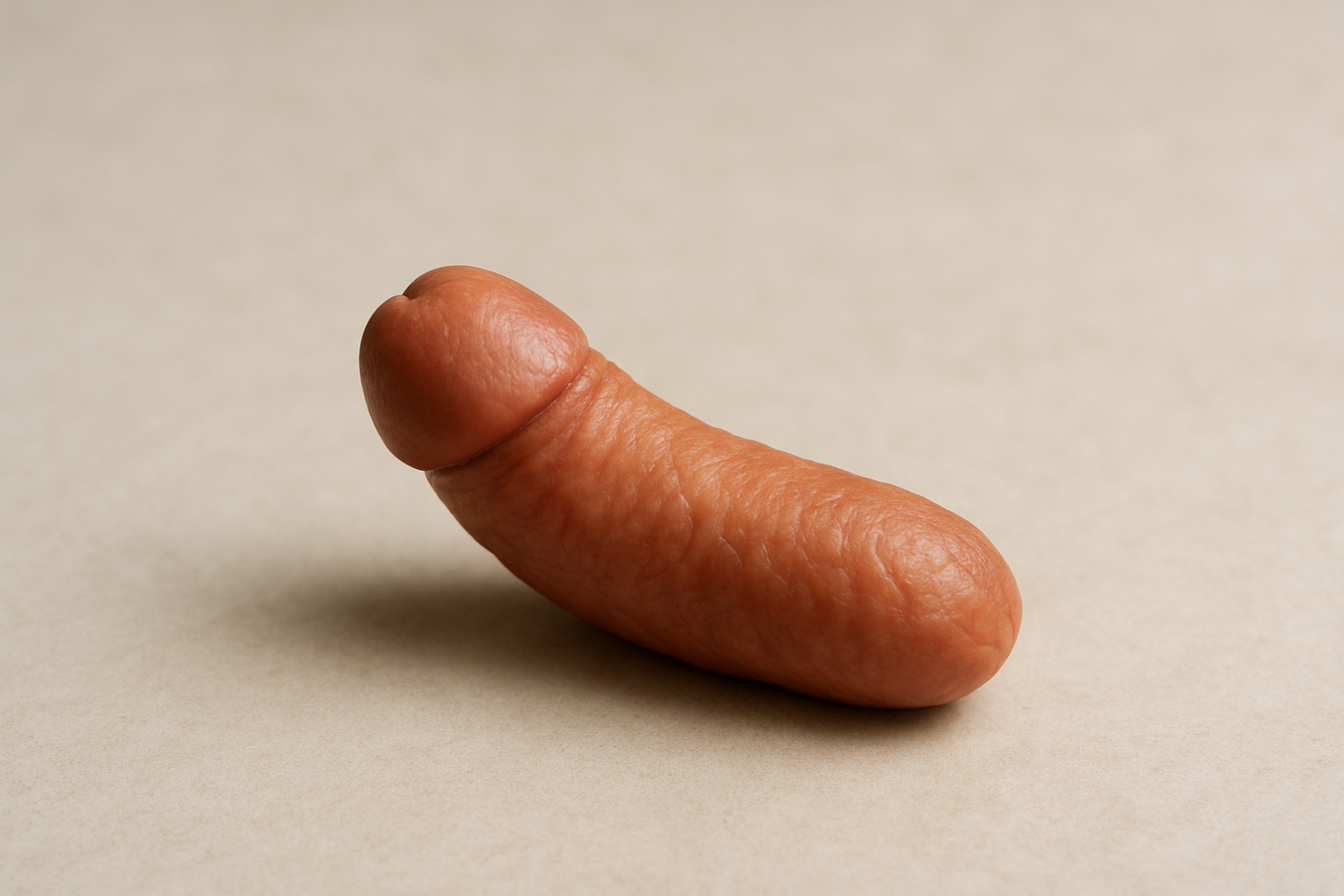Exploring the question of what size is considered a big penis reveals that societal perceptions often diverge from scientific data. While media and cultural pressures create unrealistic standards, studies show that a penis length of 6.3 inches or more is statistically rare. Understanding these facts can help alleviate anxiety and promote a healthier body image.
The question of what size is considered a big penis is a topic that has intrigued many and often leads to misconceptions fueled by media portrayals and societal pressures. The fascination with penis size is not just a modern phenomenon; it has been a subject of curiosity and discussion for centuries. However, in today’s world, the influence of media, particularly pornography, has significantly skewed perceptions, creating unrealistic standards that many men feel pressured to meet.
Challenging Misconceptions and Anxiety
One of the most common misconceptions is that a big penis is much larger than it actually is. Many men overestimate what constitutes a “big” penis, leading to unnecessary anxiety and a distorted view of what is normal. This overestimation often stems from self-reported data, which tends to be inflated, and the portrayal of exaggerated sizes in adult films. This can lead to feelings of inadequacy and affect self-esteem, despite the fact that most men fall within the average size range.
The Aim of This Discussion
The purpose of this blog post is to provide a factual, research-based understanding of what is considered a big penis and to debunk some of the prevalent myths surrounding this topic. By examining scientific data and exploring the influences of societal norms, we aim to offer a clearer perspective that can help alleviate some of the pressures associated with size perceptions. Through this exploration, we hope to promote a more positive and realistic understanding of body image and sexual health.
Understanding what size is truly considered a big penis requires delving into scientific data and separating fact from fiction. Numerous studies have been conducted to measure and understand average penis sizes, with results consistently showing that the average erect penis size ranges from 5.1 to 5.5 inches (13-14 cm). These measurements, sourced from reputable studies like those published by Healthline, PMC, and Science AAAS, are conducted under professional conditions to ensure accuracy, contrasting with self-reported data that often inflates size due to personal bias or societal pressure.
Defining “Big” in Scientific Terms
In a scientific context, a penis length of 6.3 inches (16 cm) or more is often considered “big.” This measurement places a penis in the 95th percentile, meaning only 5% of men have an erect penis longer than this. Healthline and Science AAAS highlight this percentile-based definition, emphasizing that the perception of “big” is relative and statistically rare. Understanding this percentile context is crucial, as it underscores that a large majority of men fall within the average range, challenging the inflated perceptions often perpetuated by media and pornography.
The Influence of Sociocultural Norms
Sociocultural influences play a significant role in shaping perceptions of penis size. Media portrayals, especially in pornography, often depict exaggerated sizes, which can distort public perception and create unrealistic expectations. This skewed representation can negatively impact self-esteem and body image, as noted by WebMD and Wikipedia. The pressure to conform to these unrealistic standards can lead to anxiety and dissatisfaction, despite the fact that size does not correlate with sexual satisfaction or pleasure.
These societal pressures are compounded by the fact that many men overestimate what constitutes a big penis, as self-reported sizes are often exaggerated. This can lead to a cycle of misinformation and insecurity, as individuals compare themselves to these inflated norms rather than scientific data.
Regional Variations and Measurement Methodologies
Another layer of complexity in defining what size is considered big comes from regional variations and different measurement methodologies. Studies, such as those reviewed by PMC, reveal that average sizes can vary by region, influenced by genetic, nutritional, and environmental factors. This variation highlights that there is no universal standard for what is considered “big,” and perceptions can differ significantly across cultures.
Moreover, the methodology used in studies can impact reported averages. Professional measurements tend to be more accurate and consistent compared to self-reported data, which can be biased. This emphasizes the importance of relying on scientifically collected data when discussing average and big penis sizes.
Psychological and Emotional Considerations
The psychological impact of misconceptions about penis size can be profound. As highlighted by PubMed, the anxiety stemming from size misconceptions can affect mental health and self-esteem. It is important to recognize that sexual pleasure and function are not solely dependent on size. Counseling and education are recommended over surgical interventions for those concerned about their size, as these concerns are often rooted in societal pressures rather than personal inadequacy.
Healthline and WebMD stress that sexual satisfaction is influenced by a variety of factors, including emotional connection, communication, and technique, rather than just size. Emphasizing these aspects can help alleviate the undue focus on size and promote a healthier, more inclusive understanding of sexual health and body image.
The question of what size is a big penis continues to be a topic of interest, often clouded by societal expectations and myths. To truly understand the nuances, it’s important to consider regional variations and the methodologies used in research. Studies reviewed by PMC reveal that average sizes can differ based on genetic, nutritional, and environmental factors, emphasizing that there is no universal standard for what is considered “big.” This variation highlights the importance of context when discussing size perceptions, as cultural differences can significantly influence these views.
Impact of Measurement Methods on Perceptions
The methodology used in studies can greatly affect reported averages. Professional measurements, which are typically more accurate, contrast with self-reported data that often skews larger due to personal bias. This discrepancy underscores the importance of relying on scientifically collected data to inform discussions around average and big penis sizes. The precision of professional measurement methods, as highlighted by Science AAAS, ensures a more reliable understanding of what constitutes a big penis.
Psychological and Emotional Implications
Misconceptions about penis size can have significant psychological and emotional effects. According to PubMed, anxiety stemming from size misconceptions can impact mental health and self-esteem. It is crucial to recognize that sexual pleasure and function are not solely dependent on size. Counseling and education are recommended over surgical interventions for those concerned about their size, as these concerns are often rooted in societal pressures rather than personal inadequacy.
Healthline and WebMD emphasize that sexual satisfaction is influenced by a variety of factors, including emotional connection, communication, and technique, rather than just size. By focusing on these aspects, individuals can move away from the undue emphasis on size and towards a healthier, more inclusive understanding of sexual health and body image.
Frequently Asked Questions
What is the average erect penis size?
The average erect penis size is about 5.1 to 5.5 inches (13-14 cm), according to multiple scientific studies.
What size is considered a “big” penis?
A penis length of 6.3 inches (16 cm) or more is generally considered “big,” as it falls in the 95th percentile.
Does size really matter for sexual pleasure?
No, size does not determine sexual pleasure. Many factors contribute to sexual satisfaction, and studies emphasize that size is not the most important.
Why do perceptions of size differ so much?
Perceptions are often influenced by media, pornography, and societal expectations, which can distort the reality of average sizes.
Is it common for men to overestimate their penis size?
Yes, self-reported sizes are often exaggerated compared to professional measurements, leading to misconceptions about what is “big.”
In conclusion, understanding what size is a big penis involves more than just numbers; it requires a comprehensive look at scientific data, cultural influences, and individual perceptions. By focusing on accurate information and personal well-being, rather than societal stereotypes, individuals can foster a healthier perspective on body image and sexual health.




